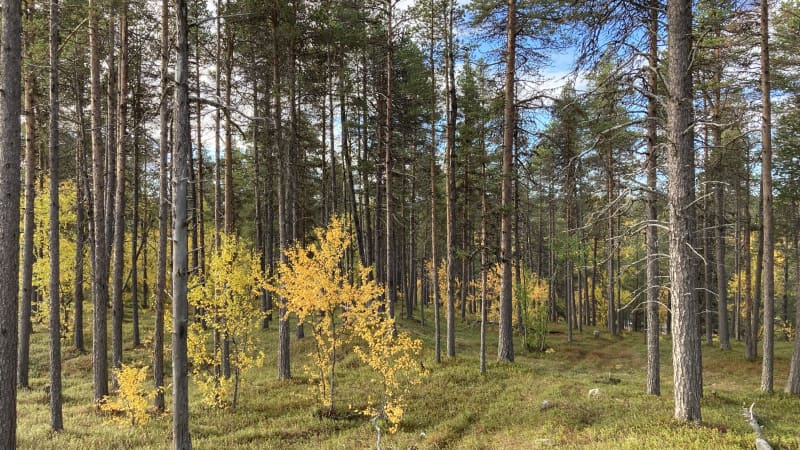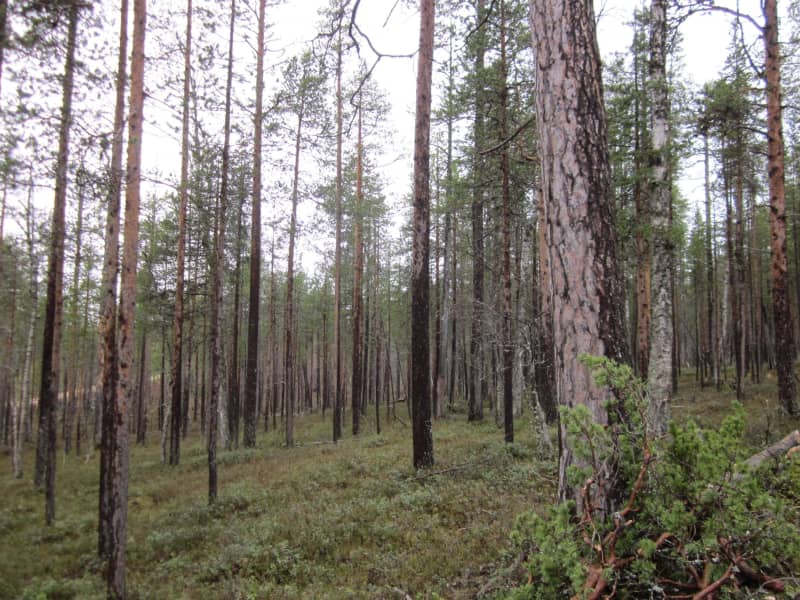A compensation register controlled by the authorities would ensure that compensation for damage to nature does not become a greenwash for companies without real benefits.
In Inari in northern Lapland, a deal worth €10 million was made for 2,900 hectares of pine forest on which the buyer will do nothing. That’s the trick: by buying and protecting the forest, the mining company Sakatti Mining Oy is compensating for the damage that the planned mine would cause to the forest in the neighbouring municipality of Sodankylä.
Finland’s largest ecological offset gives a hint of what researchers expect to be the norm in the future: when biodiversity is degraded in the future, the damage is compensated for by increasing biodiversity elsewhere.
The rules for compensation will be laid down in the Nature Conservation Act, which will enter into force next summer. Although compensation is voluntary, pressure is mounting in this direction.
For a long time, the World Bank has demanded compensation for environmental damage in the construction projects it finances. Even if the financiers would not directly demand compensation for the disadvantages, they will probably take it into account in the price of the loan more and more often.

Compensation register combats greenwashing
Natural hazards have been fixed before; for example, in Kittilä, the Lapland community threatened by the mine was moved to safety elsewhere. In ecological compensation, however, the bar is clearly higher. Damages must be compensated in full, permanently and with similar nature values.
There are two ways, i.e. protection and restoration.
If the construction of a road across a bog is to be compensated for by restoring a drained bog elsewhere, any bog is not enough.
It takes years for the bog to return to its natural state, and the delay is offset by restoring an area larger than the weakened area. The area to be restored or protected must be increased even when the success of the restoration is uncertain.
– There is a lot of experience in restoring bogs, wetlands and traditional biotopes in Finland, but not in restoring some habitat types or using some restoration methods. The uncertainty must be taken into account in the calculation, Kujala states.
Certainty of the effectiveness of the compensation is sought with the open compensation register being prepared at the Ministry of the Environment. In it, the ELY centers record compensation cases that meet the criteria of the Nature Conservation Act.

Additional income for forest owners
For landowners, all this means new earning opportunities. The Central Union of Agricultural and Forestry Producers MTK, which promotes the interests of forest owners, already opened a website in the summer where you can buy and sell nature values. The shop has, for example, saving trees and birdhouses for forest plots, and larger areas for conservation.
– The main thing is that nature is actually doing better after the compensation than before. I’m not entirely convinced that official control is the best way here.
Stores are needed in order to find compensation targets at all. At the same time, it is clear that only a small part of the natural value transactions on MTK’s website would meet the criteria for ecological compensation.
– For example, joint forests have received questions from areas where normal wood trade has been blocked, asking if this could offer them a solution. They will probably start trickling into the service little by little.
Inari’s deals were also about the area owned by the Inari collective forest, where criticism from environmental organizations and reindeer herders had stopped the timber trade with the industry. A similar situation is going on in Salla.
Not all habitats can be restored
If the pressure on the use of the forest is already less, its protection cannot fully compensate for the lost hectares. Again, a larger area is required to be protected, such as from Sakatti Mining in Inari.
– I could see that with the help of the tool, even large projects can calculate the balance of disadvantages and benefits in about a month after the materials needed for the calculation are gathered.
Ecological compensation, which requires complicated calculations, is a way to slow down the loss of nature, but it has its limits. For example, not all habitat types can be restored, for example rocky areas.
– Ecological compensation is not the only way to stop the loss of nature. In addition to that, it is absolutely necessary to reduce the weakening of nature quite significantly, says Heini Kujala.
That is, leave it unbuilt.

